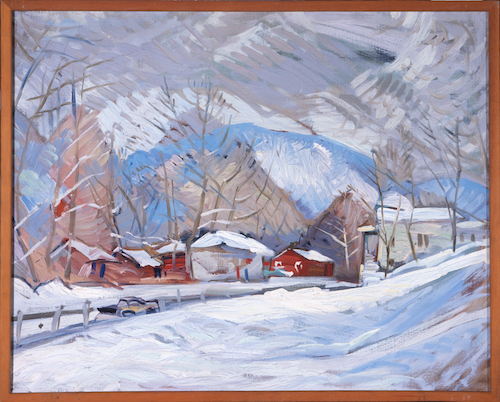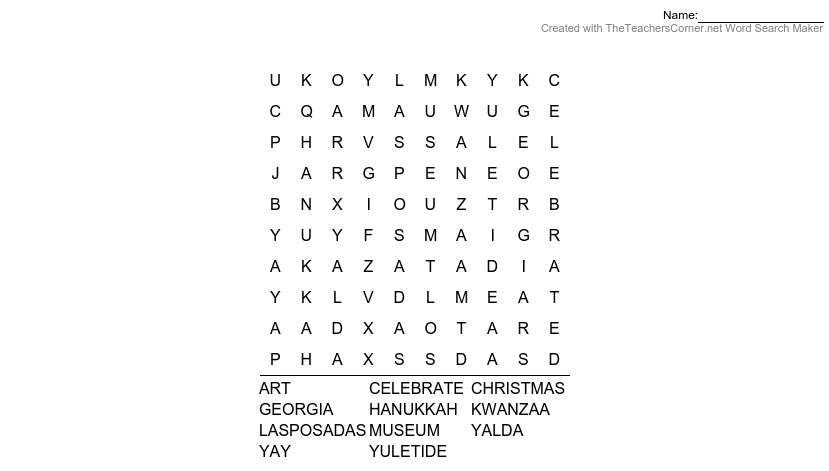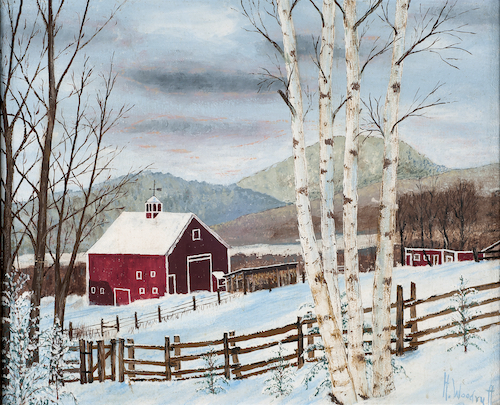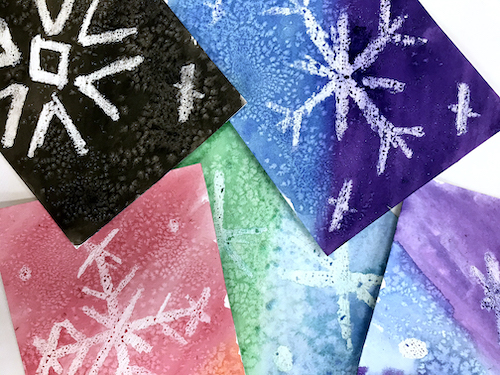
About This Exhibition
The exhibition “36.5 / A Durational Performance with the Sea” is currently on view at the museum. It is a project by the performance artist Sarah Cameron Sunde. Performance art is a kind of art that an artist makes using their body instead of art materials like paint or a canvas. It can be surprising and unusual and make you think.
For each performance, Sunde stands in ocean water for 12 to 13 hours as the tide goes in and out. Water rises up to her chin, then goes down to her feet. Local people often stand with her or sing to her. How would you feel standing in the ocean for that long? What would you think about? Sunde’s performance is filmed and shown as a video. You can see the videos at the museum. You can also see some of it here: https://www.36pt5.org/about/

One thing Sunde thinks about during her performances is how the ocean connects people. She has performed “36.5” on six continents over the past seven years.
Every continent has winter celebrations and holidays. How does your family celebrate the winter holidays? What is your favorite part?
Complete the word search below to find different ways people celebrate during the winter. If a tradition is new to you, try to find out more about it.

Snow Scenes
Check out these two paintings. How are they similar? How are they different?
These two paintings are landscape paintings. This style of painting captures a scene outdoors and usually includes a wide view of the sky.
The weather is an important part of landscape paintings. What kind of weather do you see in these paintings? What kind of clothes would you want to wear if you could step into these landscapes? What would you do once you were there?
Learn more about Hale Woodruff(opens in new tab)
Learn more about Pierre Daura(opens in new tab)
 Pierre Daura (American, b. Spain, 1896 – 1976), “Center Village in Snow,” 1961 – 71. Oil, 21 × 27 1/4 inches. Georgia Museum of Art, University of Georgia; Gift of Martha Randolph Daura. 2003.297.
Pierre Daura (American, b. Spain, 1896 – 1976), “Center Village in Snow,” 1961 – 71. Oil, 21 × 27 1/4 inches. Georgia Museum of Art, University of Georgia; Gift of Martha Randolph Daura. 2003.297.
 Hale Woodruff (American, 1900 – 1980), “Snow Scene,” 1945. Oil on panel, 25 × 29 inches. Georgia Museum of Art, University of Georgia; The Larry D. and Brenda A. Thompson Collection of African American Art. 2011.610.
Hale Woodruff (American, 1900 – 1980), “Snow Scene,” 1945. Oil on panel, 25 × 29 inches. Georgia Museum of Art, University of Georgia; The Larry D. and Brenda A. Thompson Collection of African American Art. 2011.610.
Make your own snowflakes to celebrate the season!
supplies
- Watercolor paper*
- Scrap paper*
- Pencil*
- White oil pastel*
- Watercolor paints*
- Paintbrush*
- Salt*
- Cup of water
- Newspaper or kraft paper
- Scissors


Directions
- Cover your work area with a large piece of newspaper or kraft paper to make clean-up easier.
- Cut your sheet of watercolor paper into four even rectangles.
- Practice drawing snowflakes with your pencil and scrap paper. Use the ones pictured above as guides. (Remember, no two snowflakes are alike!)
- When you are ready, use the white oil pastel to draw snowflakes on your paper. Draw several snowflakes of different shapes and sizes.
- Use plenty of water to wet the watercolors. Paint over your snowflakes. The oil pastel drawings will appear as you paint.
- While the paint is still wet, sprinkle salt over the paper and let it dry.
Tip: This activity works because oil and water do not mix. The oil pastel creates areas where the watercolor cannot stick. If the paint is covering the oil pastel drawings, it is too thick. Use more water to help the paint resist the oil.